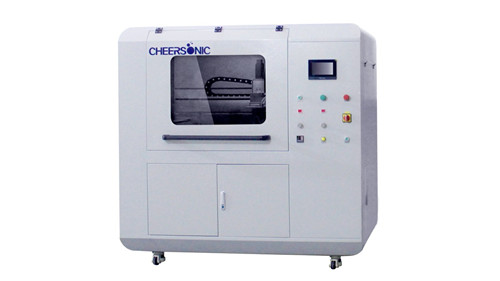Ultrasonic Coating System For SD Coating
Compared withUltrasonic spray coating system and SD coating system
As one of the new energy sources with great development prospects around the world, PEMFC is known for its high conversion efficiency and low pollution. Protons exchange membrane fuel cell construction: MEA ( PEM, catalyst and GDL) and bipolar plate. Proton exchange membrane is one of the most critical components of PEMFC, which directly affects the performance and life of the battery.
Proton exchange membranes can generate electricity, and catalysts must be coated on both sides of the film. The coating process must ensure that the thickness of the catalytic layer is uniform, and there are no defects such as cracks, particles, bubbles, edge effects, and so on. At present, the coating processes for mass production mainly include doctor blade, roll coating transfer, slit extrusion and ultrasonic spray systems.

Slot-die (SD) coating technology is an advanced predictive coating technology. During coating, all the fluid fed into the extrusion die forms a coating on the substrate. Therefore, the surface load of the wet coating can be accurately controlled by changing the slurry feeding speed and coating speed. A certain flow of slurry enters the internal cavity of the die from the feed port of the extrusion head and forms a stable pressure. The slurry is finally sprayed out at the slit outlet of the die and coated on the foil. On the material, the coating is dried in an oven. During the coating process, due to the fluid characteristics of the slurry, it is easy to form a half-moon-shaped feature as shown in Figure 1 at the starting point, ending point and both sides of the coating. During the coating process, the appearance of a sudden increase in thickness at the edge of the pole piece is called the \”thick edge\” phenomenon. This thick edge phenomenon is undesirable, and will cause problems in the battery process and battery performance and consistency. However, the performance of the corresponding equipment is far behind the ultrasonic spraying equipment, and the equipment cost is high, the operation requirements are high, and the maintenance cost is relatively high.
Ultrasonic coating technology creates highly uniform, repeatable and durable membrane. It operates through continues vibration from the nozzle to break up the agglomerated particles into evenly dispersed functional particles, maximizing surface area exposure of the catalyst to create higher electrochemical performance of coatings. And when using the ultrasonic spray coating technology apply catalyst coating to the membranes by adjusting the spray parameters (height, flow rate and frequency of the nozzle) to control the rate of water added, because it needs to keep the thin membrane moist and not deformed.
Cheersonic has committed to the research and development of various ultrasonic equipment for more than ten years. CENG-S, CENG-M and CENG-L developed by our company is basic, programmable micro material spray coating system. Various types of catalysts suspensions including the carbon black ink , PTFE binder, ceramic slurry, platinum and other precious metal can be sprayed by using this bench-top ultrasonic spraying system capable of programming and controlling x, y, z three-axis coordinated operation are deposited onto PEM fuel cells, GDL, electrodes, electrolyte membranes and SOFC to create maximum load and high cell efficiency. Precise and controllable liquid supply system compared with different types of customized nozzles, significant reduction in materials usage and producing the highly uniform durable, repeatable and durable coatings from R & D to medium-sized batch production. The body is small and easy to place, the spraying performance is stable, and the operation is convenient.
Ultrasonic Coating System For SD Coating – Catalyst Coating – Cheersonic
